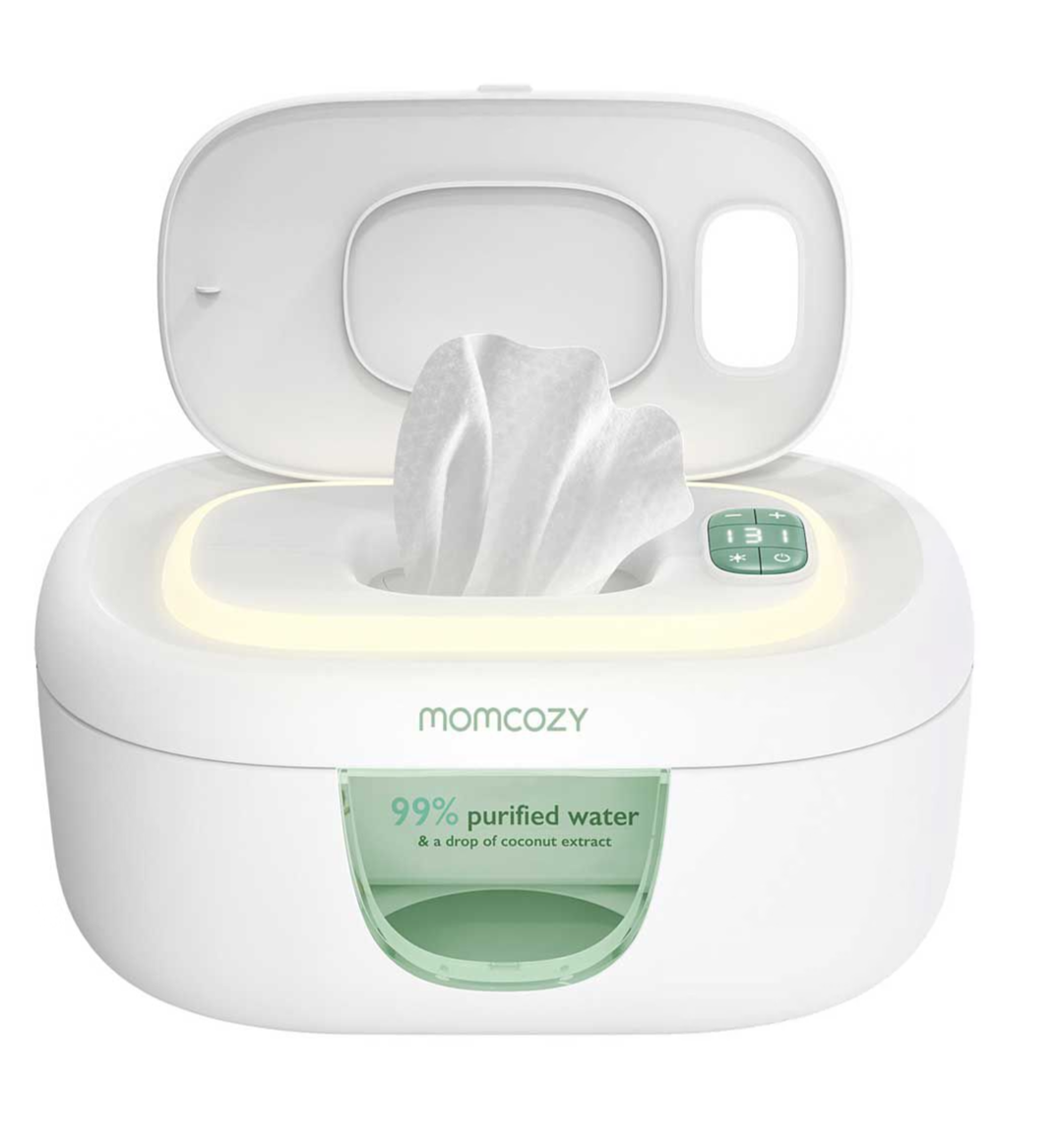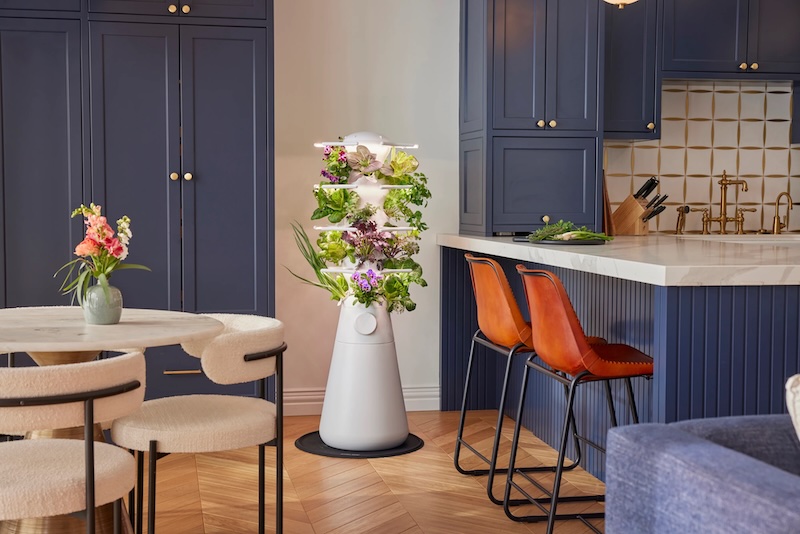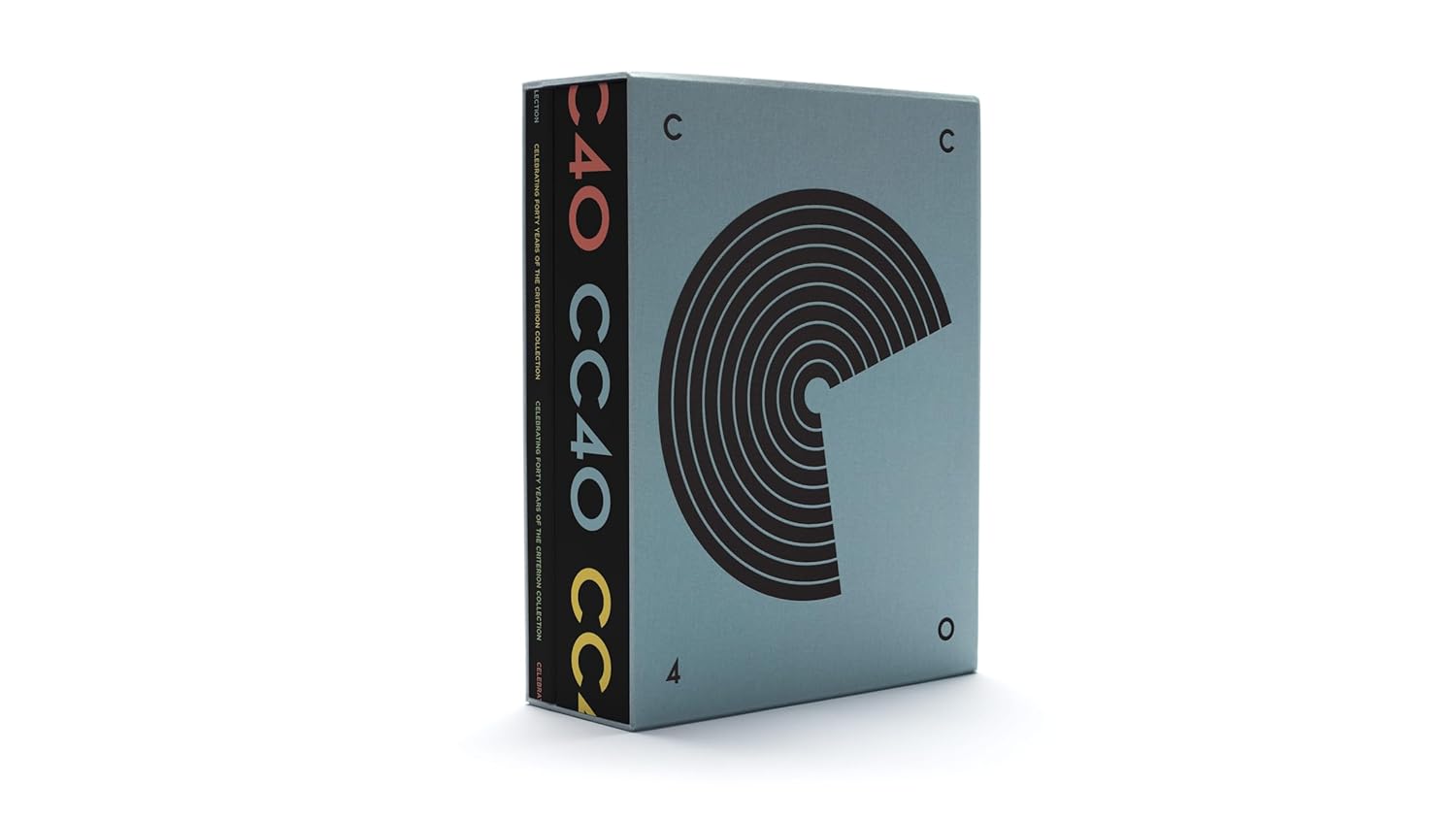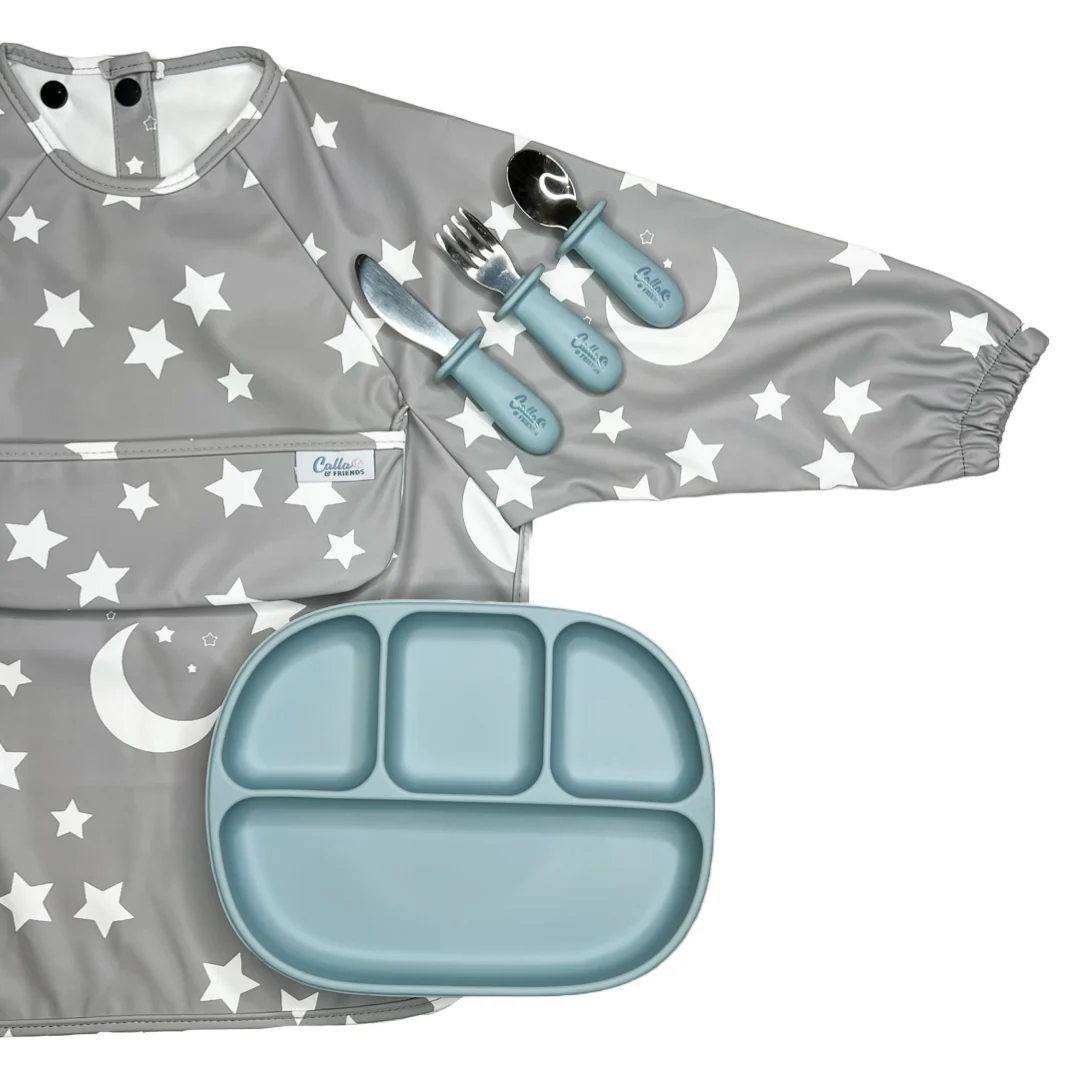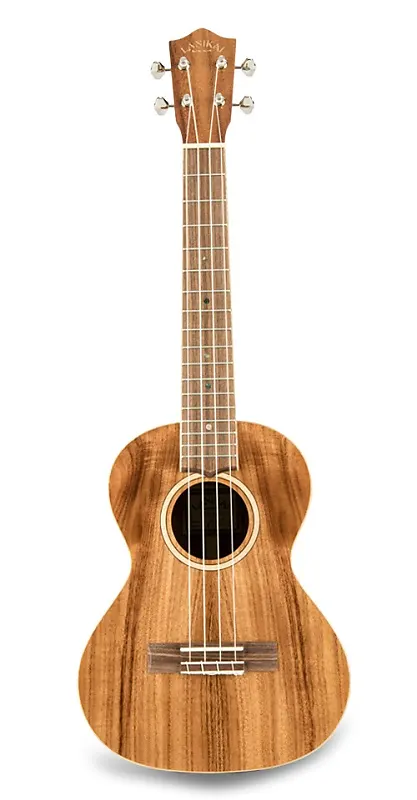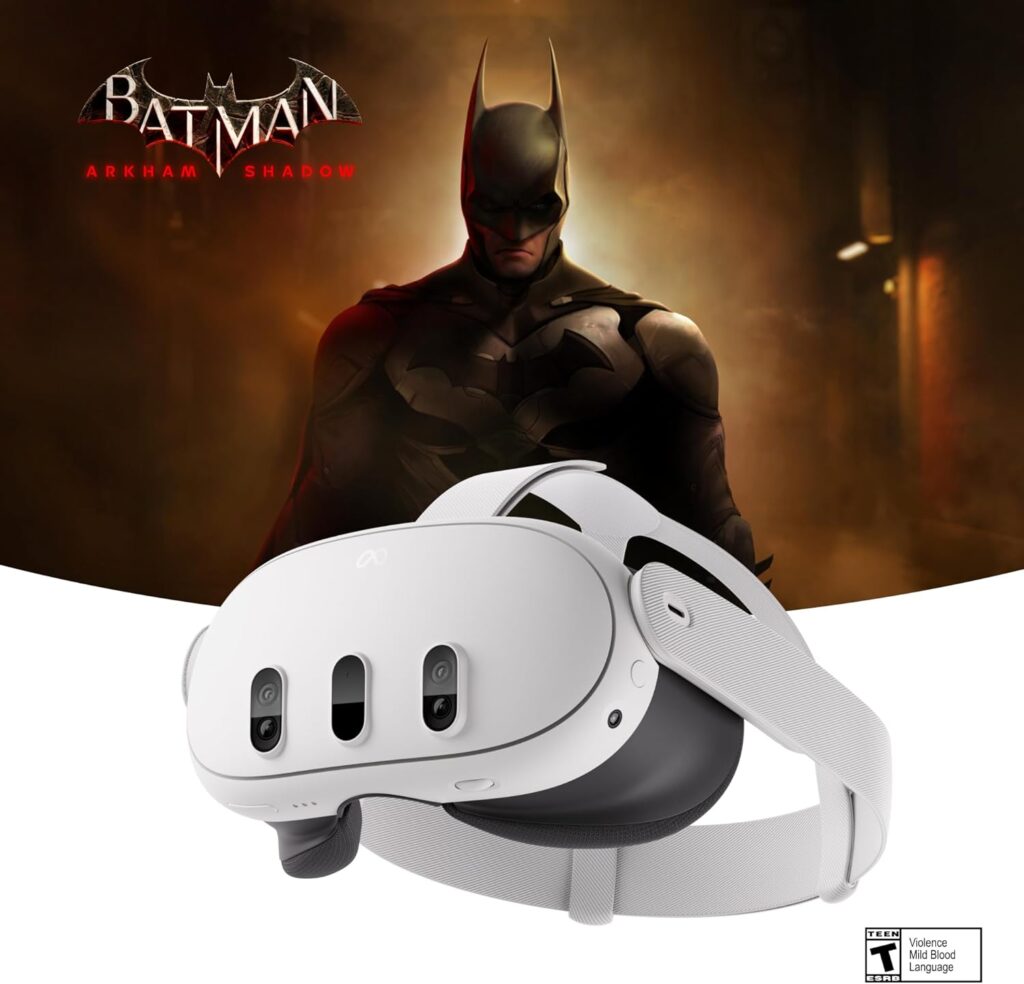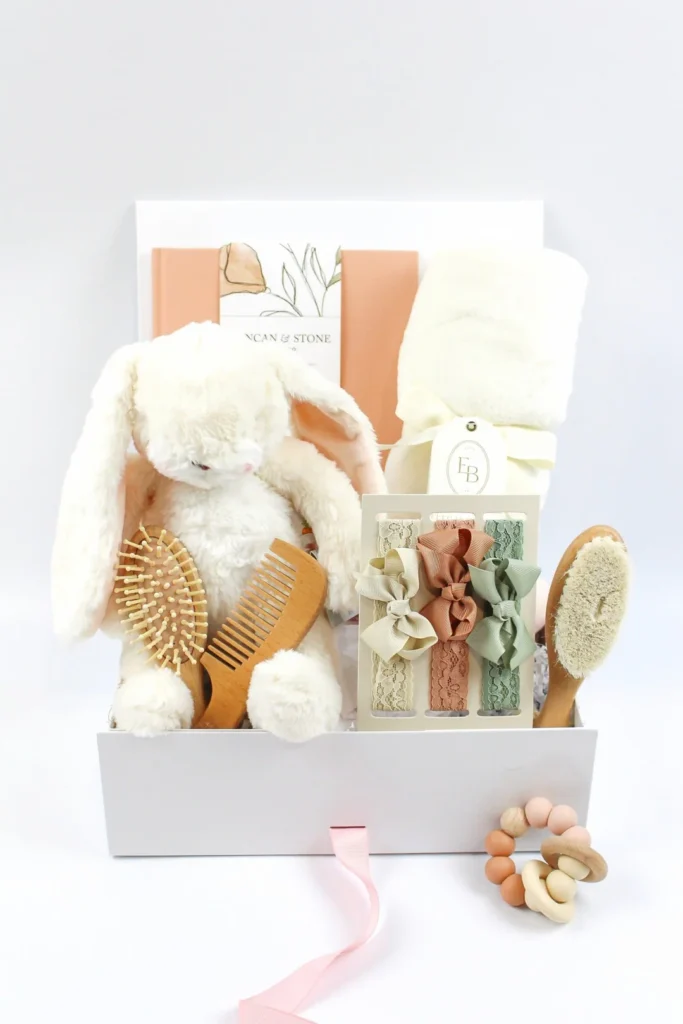Cold wipes at 3 a.m.? Hard pass. A wipe warmer isn’t a gimmick—it’s a tiny workflow upgrade that reduces startle, shortens cry time, and helps you get in and out of changes with less drama. The right setup keeps wipes warm (not hot), evenly moist, and hygienic between changes so you aren’t juggling kettles, plastic bags, and a wriggly baby. This guide shows you how to build a smarter nappy station, dial in temperature and moisture, and keep everything clean with minimal effort—anchored by the Momcozy Baby Wipe Warmer.
Why it helps: Warmth calms the startle reflex, which means fewer squirmy escapes mid-change. You’ll work faster, baby chills less (literally), and night changes go back to sleep sooner.
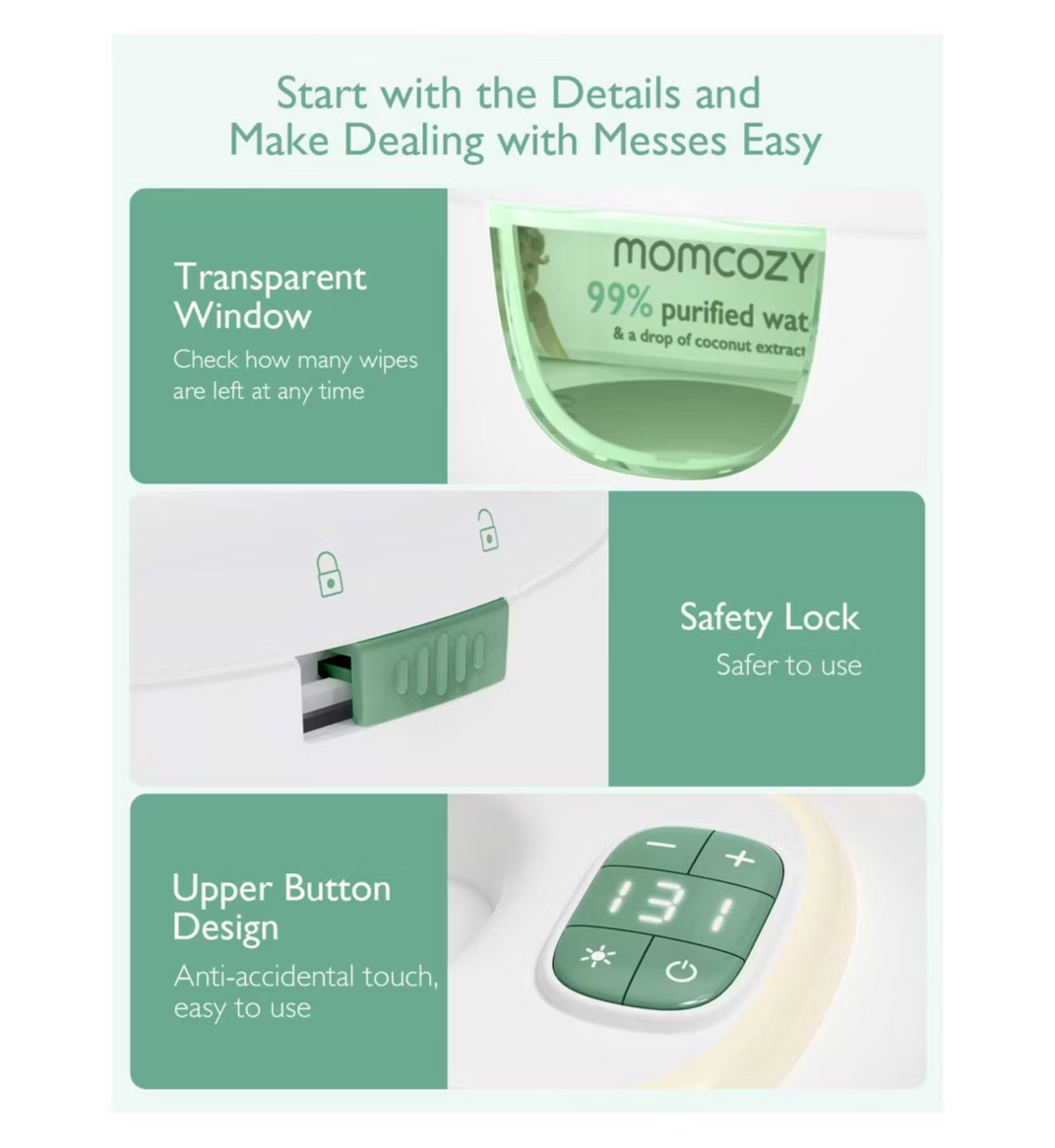
How a Wipe Warmer Fits a Real Day (and Night)
Think of the warmer as a “friction remover.” It sits at arm’s reach, feeds warm wipes one-handed, and stays consistent across the dozen micro-changes you’ll do this week. For newborns, that’s the difference between a calm reset and a full wake-up. For older babies, it softens resistance during nappy-rash flare-ups and teething days when skin is extra sensitive. The Momcozy Baby Wipe Warmer is designed for standard UK wipe packs so you don’t have to hunt for special refills—just drop, thread, and go.
Setup: A Clean, Safe, One-Handed Station
Build your nappy zone so you can move with a sleepy brain and one free hand:
- Placement: Put the Momcozy Baby Wipe Warmer on a stable, waist-high surface, cord tucked away, and within easy reach of nappies, cream, and spare clothes.
- Height & Reach: Dominant-hand side, lid opening away from the wall so the wipe path is straight.
- Power: Use a surge-protected strip if you’re also running a night light or sound machine; keep cords well out of reach.
- Lighting: A low, warm night light (around 2700K) nearby protects everyone’s melatonin and helps you see without waking the house.
Temperature & Moisture: Warm, Not Wet—or Dry
Warmth is great; soggy or crispy wipes are not. A few pro moves:
- Prime the stack: When loading a new pack, squeeze out excess pooling liquid from the bottom of overly saturated wipes, then fan the stack once. Too much fluid invites mildew; too little dries out.
- Thread correctly: Feed the centre wipe through the silicone guide so each new wipe pulls cleanly; this reduces lid-open time and heat loss.
- Flip the stack weekly: If your wipes dry at the top, flip the stack mid-week (clean hands!) to rebalance moisture.
- Lid discipline: Open only as long as it takes to grab the wipe; close fully to keep the microclimate steady.
- Optional hydration pad: If your wipes feel dry in winter, place a clean, damp (not dripping) reusable pad at the bottom layer and wash it during weekly cleaning.
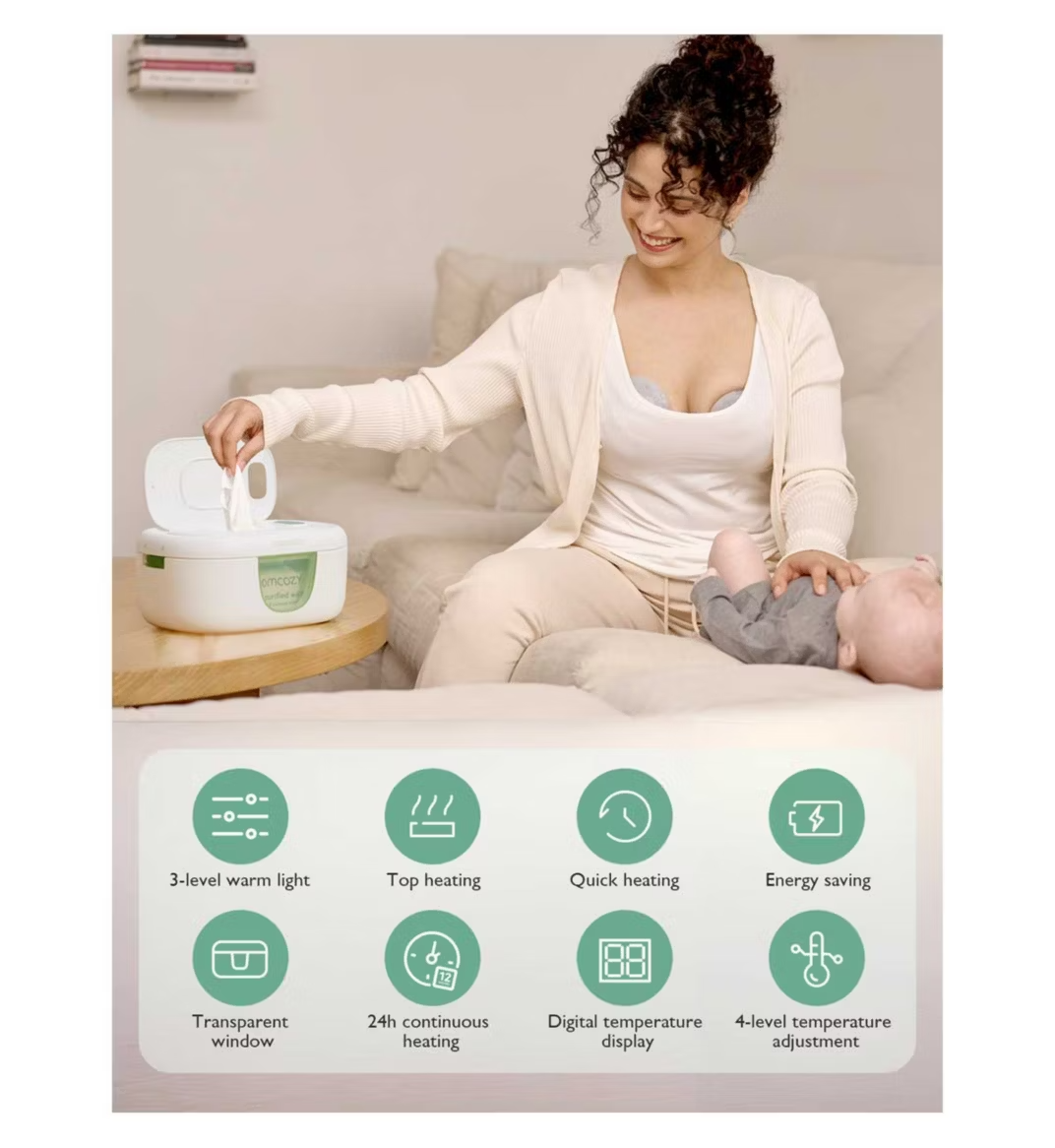
Night-Change Workflow (Fast, Calm, Back to Bed)
- Pre-set: Warm wipes ready, fresh nappy opened, cream uncapped, vest unsnapped.
- Minimal light + soft voice: Keep the room quiet; narrate one short phrase (“Quick change, then sleep”).
- One-hand pull: Open lid, pull a wipe with one hand, close the lid.
- Clean top-to-bottom: Use a single direction for hygiene; fold the wipe as you go for multiple passes.
- Seal & swaddle: Fresh nappy, dab barrier cream if needed, back into the sleep bag, cuddle, lights out.
Warm wipes soothe the startle that often triggers a midnight “playtime spiral.” The Momcozy Baby Wipe Warmer makes this whole sequence muscle memory.
Sensitive Skin & Nappy Rash Days
When skin is sore, temperature and touch matter more:
- Use fragrance-free wipes or add a water-only cotton pad for the last pass.
- Pat, don’t scrub. Warmth helps residue lift with less pressure.
- Air time: Leave the nappy off for a minute after cleaning; warmth keeps baby comfortable while you air-dry.
- Barrier cream smartly: A pea-sized amount spread thinly—thick layers can trap moisture against skin.
Hygiene & Weekly Care (Low Effort, Big Payoff)
Warm + moist = great for wipes, not for germs. Keep it pristine with this simple routine:
- Daily: Close the lid immediately. If a wipe tail sticks out, tear it off so the stack doesn’t wick out moisture.
- Every 2–3 days: Top up with a fresh pack rather than letting the last few wipes bake for a week.
- Weekly deep clean: Unplug. Empty remaining wipes into an airtight bag. Wipe interior with a clean cloth and warm soapy water; rinse cloth and wipe again with plain water; dry thoroughly. Pay attention to corners and the dispensing slit.
- Monthly descale (if you use a hydration pad or live in hard-water areas): With the unit unplugged, wipe internal surfaces with a cloth lightly dampened with a 1:1 white-vinegar/water mix; follow with a clean water wipe-down and dry fully before use.
- Never: Submerge the unit or use harsh solvents/bleach in the chamber.
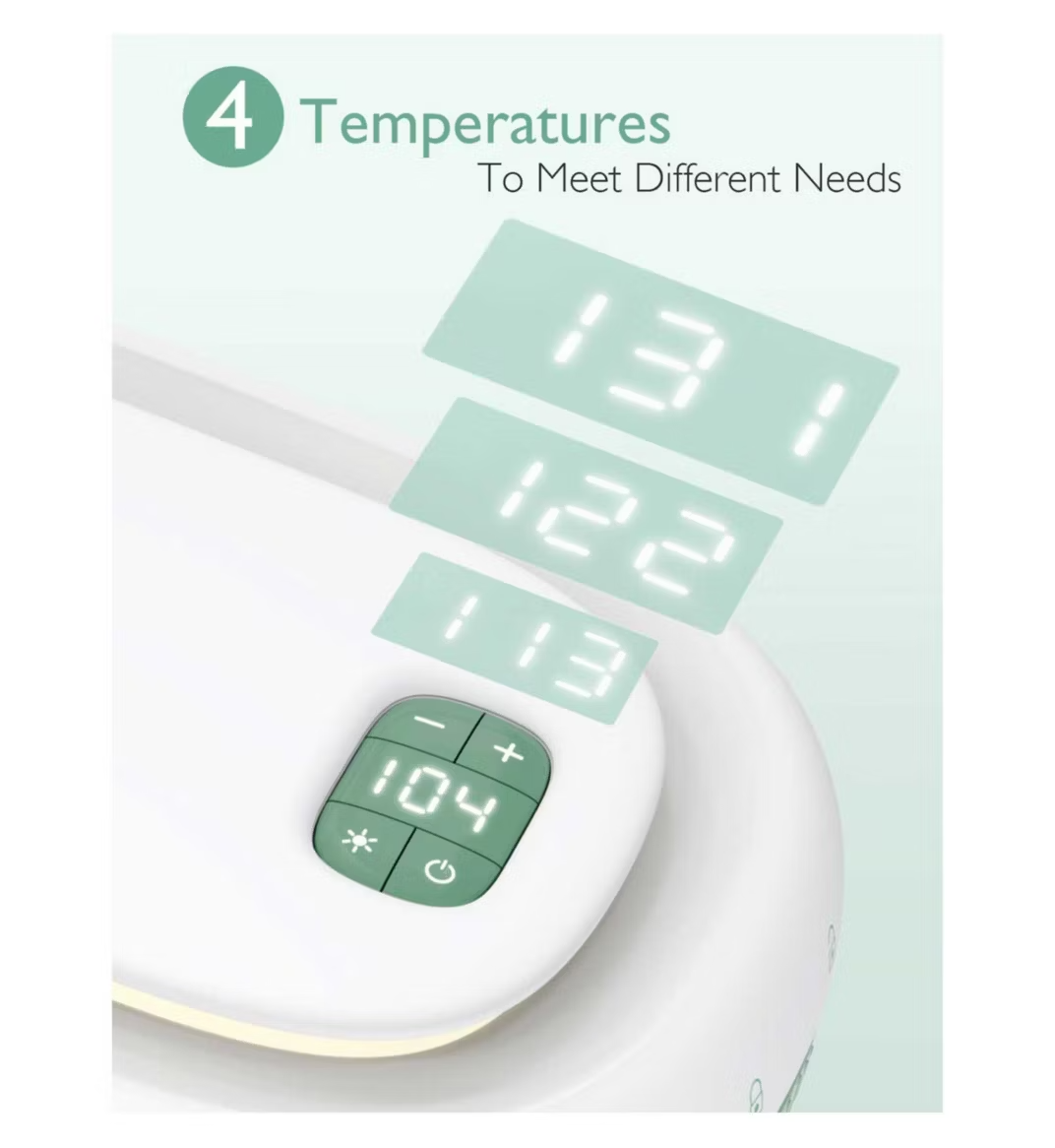
The “One-Handed Parent” Test (Design Details That Matter)
A wipe warmer should pass three tests in motion:
- Stable feed: Wipes pull smoothly one-handed without yanking the whole pack.
- True lid seal: You can hear/feel the click—no heat leak, no drying.
- No-guess threading: The top wipe emerges cleanly every time; no digging into the stack.
The Momcozy Baby Wipe Warmer checks these boxes so you can focus on baby, not on fishing for wipes.
Mixed Guidance Block (Checklist + Context): Your 60-Second Station Audit
- Reach: Can you open, pull, and close with your dominant hand while the other hand steadies baby?
- Heat: Warm, not hot—test a fresh wipe on your inner wrist. If it feels too toasty, open the lid for 10–15 seconds to vent.
- Moisture: Top wipes not dry; bottom wipes not soupy. Flip stack weekly to balance.
- Refill timing: Never wait for “cardboard dry”—swap packs with 10–20 wipes left.
- Hygiene: Weekly wipe-down and monthly descale if needed; no standing water in the chamber.
- Safety: Cord routed away from the changing area; unit on a stable, ventilated surface.
Travel & On-the-Go Alternatives
You won’t bring a warmer to the park—and that’s okay. Keep a tiny routine:
- Pre-warmed wipes in a pouch: Pour a little warm water onto fragrance-free wipes and seal in a zip pouch just before you leave (use within 1–2 hours).
- Thermal bottle trick: Carry warm water in a small insulated flask; dampen a wipe at change time for a kinder temperature.
- Car-boot changes: Keep a fold-out mat, spare vest, and a small bag for soiled items. Temperature comfort matters even more in winter—pre-dampen wipes with warm water from your flask.
Safety Notes You’ll Be Glad You Knew
- Always unplug before cleaning.
- Keep the warmer out of reach; never leave cords where little hands can tug.
- Use manufacturer-recommended wipes; avoid adding oils, lotions, or disinfectants to the chamber (they can damage materials and skin).
- Don’t stack heavy items on the lid—warped lids = dry wipes.
- If you see condensation pooling, reduce ambient humidity in the room and ensure the lid is fully sealed.
Sustainability & Budget: Buy Smart, Waste Less
A good warmer reduces “waste wipes” you toss because they’re dry or too cold for sore skin days. To minimise footprint:
- Choose big refills that fit the chamber. Fewer plastic wrappers, fewer restocks.
- Use fragrance-free, biodegradable wipes where possible, and pair with warm water for stubborn clean-ups so you use fewer per change.
- Rotate the last few wipes into your travel pouch so nothing desiccates in the warmer.
Troubleshooting: Fast Fixes to Common Annoyances
- Top wipes drying out: Flip stack mid-week; ensure the lid seals; reduce lid-open time; consider a clean, slightly damp pad at the bottom layer.
- Bottom wipes too wet: Lightly squeeze new packs before loading; don’t add free water to the chamber; allow airflow around the unit.
- Musty smell: Immediate clean + dry; reload with a fresh pack. Add “weekly clean” to your calendar—tiny habit, huge payoff.
- Hard to pull wipes: Re-thread through the guide; fan the corners of the top 3–4 wipes so they separate cleanly; avoid overly textured wipes that snag.
- Uneven warmth: Give the unit 30 minutes after a fresh load; keep it out of cold draughts; don’t overpack the chamber beyond the rated count.
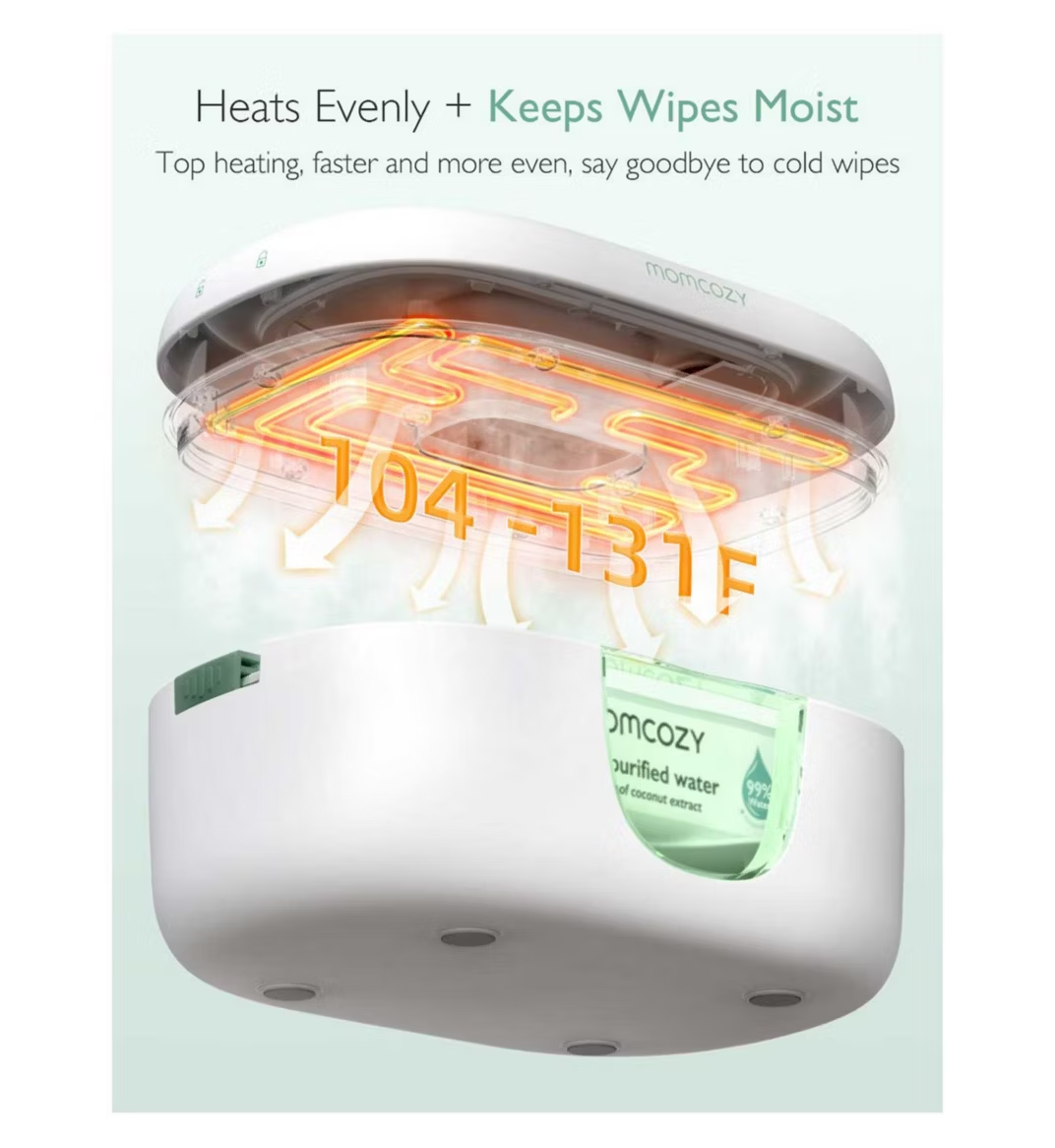
Beyond Nappies: Bonus Uses You’ll Love
- Weaning clean-ups: Warm wipes make face and hand clean-ups gentler after messy purées.
- Quick sink-less mornings: A warm wipe on a chilly morning is a calmer start before school runs with older siblings.
- First-aid moments: For toddlers, warm wipes are kinder on scrapes than icy cloths (follow with proper cleaning and care, of course).
Conclusion
A wipe warmer won’t parent for you—but it will remove friction from the most frequent care task in your week. Warm, evenly moist wipes calm the startle reflex, protect sensitive skin, and help you move quickly and gently through day and night changes. Keep the routine simple: smart placement, quick open-pull-close, moisture balance, and a 7-day cleaning cadence. Do that, and the Momcozy Baby Wipe Warmer becomes one of those quiet tools you notice only when it’s missing—because nappy time is just… easy.
FAQ
- Do I need a wipe warmer, or is it a “nice-to-have”?
It’s not mandatory, but most parents find warm wipes reduce startle, crying, and resistance—especially at night and during nappy-rash days. If you value speed and calm, it earns its spot. - Can warmed wipes cause irritation?
Warmth itself doesn’t irritate; fragrance and additives might. Use fragrance-free wipes and keep the chamber clean and dry between refills. - How hot do the wipes get?
A good warmer keeps them warm, not hot—comfortable on your inner wrist. If any wipe feels too warm, wave it for a second and close the lid to retain the rest. - Will wipes dry out?
Not if you manage moisture: close the lid promptly, flip the stack weekly, and don’t overfill the chamber. Replace with a fresh pack before the last few shrivel. - Can I add water or essential oils to the warmer?
Skip oils—they can irritate skin and damage materials. If you add water, do it via a clean damp pad under the stack, not by pouring liquid into the chamber. - How often should I clean it?
Weekly wipe-down, monthly descale if needed, and daily lid discipline. Always unplug before cleaning and dry thoroughly before reloading. - What wipes are compatible?
Most standard UK soft-pack wipes work. Ultra-thick, highly textured wipes may pull less smoothly; fan the top few to help them feed. - Is it safe to leave the warmer on overnight?
Use as directed and keep the area ventilated. Many parents leave it on low or “ready” mode so night changes are immediate—just keep cords tidy and out of reach. - What if I’m traveling?
Pre-warm and pack in a sealed pouch for short trips, or bring a small insulated flask of warm water to moisten wipes on demand. The at-home warmer stays ready for your return.

